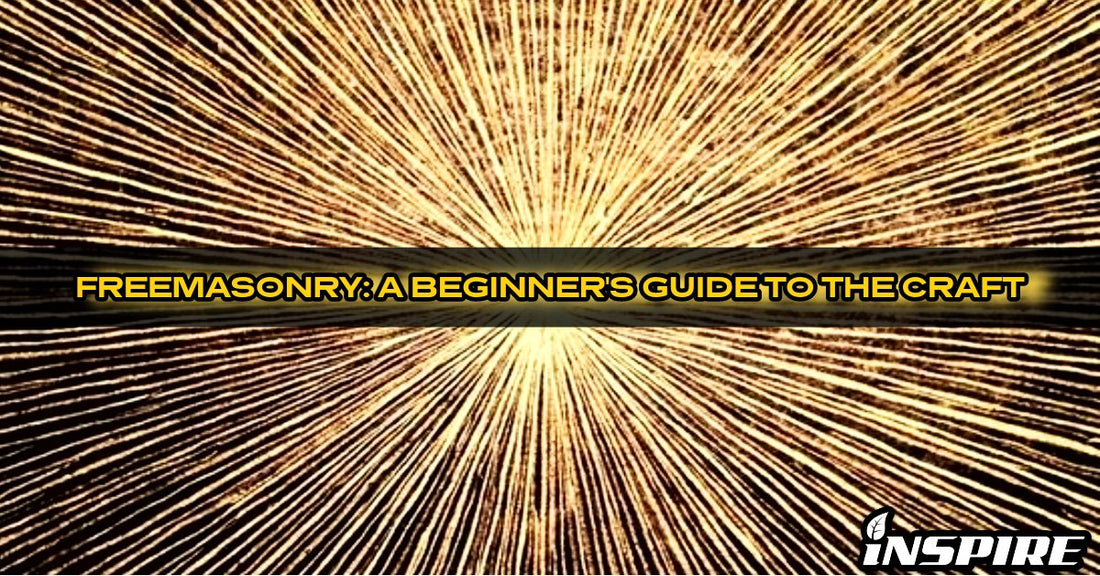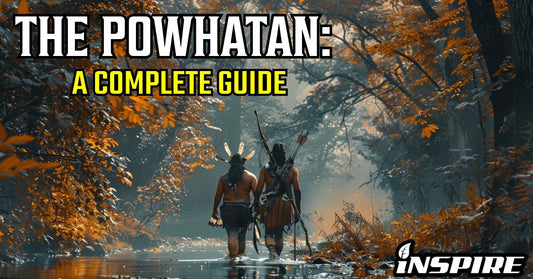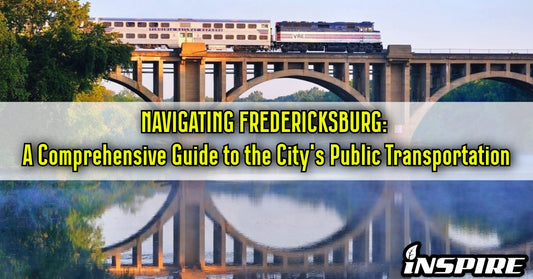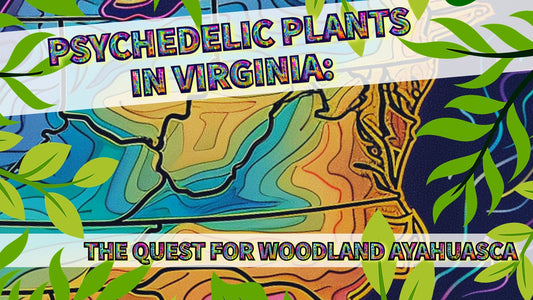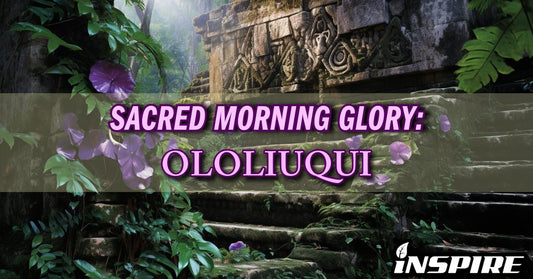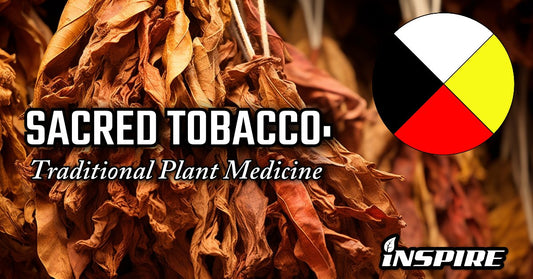Written By: Zach Champ
Connect with me on Instagram!

WHAT IS THE ‘CRAFT’?
Ever been excited or aroused by an idea? What do you see in your mind's eye when you imagine things?
The power of creative ideation and manifestation is the sacred magical art which Freemasonry postulates and educates men in.
The Occult Law of Manifestation is the prime force that makes magic possible. It is those things that we think, feel, and desire that create and shape the world around us!
AS UNCLE BEN SAID IN SPIDERMAN,
“WITH GREAT POWER COMES GREAT RESPONSIBILITY!”
Freemasonry, at its core, is a system of speculative and applied moral and spiritual philosophy.
Freemasons teach each other through the use of symbolic allegories all which are enshrined within ancient and mystical imagery connecting the Masons of today with those of yesterday.

THE MASON'S TOOLS: A PATH OF ENLIGHTENMENT AND SELF-MASTERY

The square, compass, and level serve as guiding principles on the path to self-realization and enlightenment.

The Square: Honoring Integrity and Alignment:
Central to Freemasonry is the concept of integrity, and the square symbolizes this principle. It emphasizes the importance of remaining true to one's word and intention, fostering consistency in actions and thoughts. Much like a foundation stone that anchors a mighty structure, the square reminds Freemasons to align their conduct with their moral compass, ensuring authenticity in every endeavor.

The Compass: Balance, Proportion, and Personal Boundaries:
The compass embodies the notions of balance, proportion, and the setting of personal boundaries. Just as a skilled artist harmonizes colors and shapes on a canvas, Freemasons seek equilibrium in their lives. The compass assists in maintaining a sense of proportion, enabling individuals to strike a balance between opposing forces and navigate life's intricacies with poise. Furthermore, it encourages the delineation of personal boundaries, safeguarding individual values and promoting self-awareness.

The Level: Embracing Equality and Unity:
Representing equality, the level serves as a powerful symbol of Freemasonry. It highlights the intrinsic worth of every individual, irrespective of societal hierarchies or backgrounds. Freemasons embrace the concept of leveling, promoting a society founded on fairness and respect. By recognizing the shared humanity in all, they strive to foster unity and harmony among diverse individuals, creating a world guided by compassion and justice.

THE DEGREES: A PATH OF KNOWLEDGE AND SELF-DISCOVERY
The Masonic journey unfolds through three degrees, each offering unique insights and opportunities for personal growth:

First Degree - Apprentice
The Apprentice degree marks the first step on the path of self-discovery and enlightenment. Seekers are introduced to the symbolic rituals and teachings of Freemasonry. This degree emphasizes the importance of self-reflection, moral development, and the pursuit of knowledge. Apprentices lay the foundation for their Masonic journey, cultivating the qualities necessary for growth and transformation.

Second Degree - Fellow of the Craft
As individuals progress to the Fellow of the Craft degree, they delve deeper into the teachings and symbolism of Freemasonry. This stage focuses on personal growth, skill development, and the application of knowledge. Fellow Masons refine their abilities, honing their craft and contributing positively to their communities. The emphasis on education and the cultivation of virtues promotes individual advancement and service to others.

Third Degree - Master Mason
The pinnacle of the Masonic journey, the Master Mason degree represents a profound initiation into higher levels of understanding and self-realization. Through intricate rituals and symbolic ceremonies, Master Masons undergo a symbolic rebirth, embracing spiritual enlightenment. This degree encourages seekers to pursue wisdom, virtue, and the betterment of humanity. It marks the culmination of the Masonic path, where individuals emerge as enlightened stewards of light and truth.

The tradition of degrees of awareness and knowledge comes from the ancient Egyptian, Greek, and Roman societies.
In the past, these people did not possess nor did they maintain a secular perspective or worldview… In fact, it would have been almost impossible for them to develop such an idea.
Atheists and agnostics did not exist in ancient and primitive times. Instead, man lived in a world imbued with spirits and occupied by a variety of potent, supernatural and mystical forces and experiences.

In fact, it is possible that earlier humans did not even think in the same cognitive capacity that we do in modern times- consider for instance how our ancient ancestors would not have recognized negative thoughts as being mental illness but would have considered such thinking to be the result of demons and spirits.
We have the same sensory experiences as the ancestors, but a completely different means of processing this information internally. This has profound implications for how the ancestors developed a conscious world view.

To help frame and prepare the conscious worldview of individuals and to fully integrate them as full-fledged members into society at large was the purpose of ancient colleges/universities and mystery cults.
Many Mystery Schools/cults existed to initiate individuals from higher social-classes and castes into the shadowy world of political intrigue and power.
Mystery cults were distinct from other public forms of religious worship, and instead were more exclusive and only offered initiation to certain candidates that met social and cultural pre-requisites for admission.

Often the “secret” that was revealed to initiates was actually a religious and spiritual experience and form of ecstasy delivered unto the individual and fueled by the use of sacred entheogenic plants or special wines.
This was often accompanied by a ritualistic ceremony, with many of the rituals revolving around themes of death and resurrection.
Other types of mystery schools included fertility cults which helped educate and teach adolescents how to enter the world with full sexual maturity (similar to sexual education programs, but with more symbolic mythology in their teaching).

MAKING SENSE OF CONSCIOUSNESS-
“THE WINDING STAIRCASE” AND THE CRAFT
It’s important to understand how we gain knowledge from birth to adulthood.
All of us have to rely upon our God-Given Senses to understand the reality of the world around us. We are endowed with the ability to detect and react to stimuli in the environment around us through the use of our senses. Impairment of the senses can result in severe and debilitating handicaps that can affect our quality of life (and thinking…).

The foundation of all knowledge derives from the use of our senses and capacity to think rationally and cognitively. The senses act as the bridge between the physical world and the inner/spiritual world of the human mind.
Within Freemasonry, consciousness was traditionally taught as being elevated through a graduated understanding and application of basic skills and disciplines achieved through the practical and systemic use of the mind in combination with the senses. This curriculum is enshrined and encapsulated in the symbolic representation known as the Winding Staircase.

The Winding Staircase, as its name implies, is not a straight path, but rather spirals. Likewise, symbolic esoteric knowledge, while seemingly obvious, actually builds upon itself in layers and in a recursive manner. Many concepts and themes within the Winding Staircase inspire and invoke moments of clarity and insight.
The Winding Staircase is a framework for how cognition and the human mind works.
Climbing up the Winding Staircase starts off with three steps that lead to its first landing.
You should know that the number three is the number of divinity and represents the trinity including the tri-fold nature of reality including space, time, and mind/consciousness.

The first three steps of the Winding Staircase are symbolic of the three stages of life, specifically Youth (1), Adulthood (2), and Old Age (3). They also represent the three steps or keys to mastering knowledge which include (1) the ability to gain knowledge by listening and learning from others, (2) the ability to share and teach others knowledge, (3) and the ability to keep secret or confidential certain types of knowledge.
Next as we travel along the Winding Staircase we climb the five steps which represent the five classical senses: Vision, Touch, Hearing, Taste, Smell.
(It is important to understand that the numerological importance of the number five is traditionally linked to the concept of man and the human body. It can also be associated with the 5 classical styles of Architecture- Tuscan, Doric, Ionic, Corinthian, and Composite.)

VISION:
The gift of Vision, or the ability to see is linked to the elements of Spirit or Quintessence. The gift of vision transcends mere sight, but also corresponds to the emotional depths of the human experience and soul.
However not all is as it seems. There is a battle between the things we see and the things we perceive. Sometimes things are hidden or invisible to us. Our eyes deceive us often, sowing seeds of discontent, envy, and anxiety.

If we could not see those things that trouble us, how would we even be aware of their existence?
There is a famous saying that states: “I have three eyes- two for seeing, and one for feeling!”.

What this is in reference to is our Pineal Gland, a specialized hormone-producing gland located in the center of the brain.
The Pineal Gland is a light-sensing organ, and releases hormones based on the amount of light in one’s environment. It is the eye that sees beyond sight, delving into the mysteries of intuition and insight.

Vision transcends the mere act of seeing. “Seeing is touching at a distance.” between the observer and the observed. It invites us to explore the depths of perception, to discern the subtle nuances that elude casual observation.
In this way, Vision is an art which allows us to unveil illusions and see pure TRUTH in things.

TOUCH:
The sense of Touch is associated with the element of Earth, and as humans we are deeply rooted in the experience of touch and by constantly being connected with the Earth. Our feet always touch the ground below us, and our sense of balance is based on our firm and steadfast connection with stabilized surfaces.

Touch is the primal sense, one that even the simplest organisms rely on before evolving more complex sensory organs.
Touch is the essence of healing, a language shared by caregivers, doctors, and even animals. It speaks of comfort and connection, allowing us to communicate our deepest emotions without uttering a single word.

A simple touch can convey empathy, compassion, and understanding, binding individuals in a moment of shared humanity.

HEARING:
The sense of Hearing is associated with the element of Air. It is traditionally believed that God “breathed” life into man. In order for life to thrive, there must be Air. Breathing puts us in sync with our environment.

Speech, the cornerstone of human communication, is fundamentally vibrational. When sound is carried by air, it becomes the vehicle for communication and understanding. It is the resonance of vocal cords and the undulating waves of sound that carry our thoughts and emotions to others!

From gentle whispers to tempestuous storms, the world speaks to us through sound. The most powerful forces in nature are storms that come with heavy winds such as Hurricanes, Tornados, and Thunder. Music, a language of its own, speaks to the soul without the need for translation.

Whether it's the haunting notes of a sitar in India, the passionate rhythms of flamenco in Spain, or the soul-stirring harmonies of classical compositions, music is a testament to Hearing's ability to connect us on a profound, emotional level.

TASTE:
The sense of Taste extends beyond the palate and is entwined with the element of Water. Water is necessary and vital to life, and likewise it is through our sense of taste that we distinguish those things which are safe and GOOD for us to eat, and those things which are foul and can make us sick.

“Having good taste” is more than just about flavor, it is about consuming and acting in manners which provide sustenance for us and align us with our inner spiritual nature.
We produce and eat more food than any civilization that has ever come before us… yet no one is satisfied or content with their level of indulgence, manifesting in health problems like obesity and anorexia, as well as social issues like hunger and malnourishment.

What causes these problems is the disconnection of modern society from the natural order of nourishment, of which the sense of taste is intrinsically linked.

SMELL:
The Sense of Smell is the most magical of senses- “the nose knows” as they say! The nose is the only triangular-shaped part of the human body.

“A pleasant fragrance clings to the hands that give flowers.”
The sense of smell is linked with the element of Fire, where it conjures memories, evokes emotions, and taps into the deepest recesses of our consciousness. Smells play an integral role in enhancing our lives. The aromatic compounds in our world play a symphony for our senses, unlocking forgotten chambers of memory and emotion.
Smell communicates in a language that transcends the boundaries of spoken or written word. The smell of a loved one's clothing, the aroma of a favorite meal, or the scent of a particular place can convey emotions and sentiments that words often fail to capture.

These smells can warn us of potential harm while also igniting our senses with intrigue and curiosity. They serve as a reminder that even in the most perilous scents, there is an element of fascination. It alerts us to things that are not readily seen or apparent. Consider for instance how the smell of smoke or sulfur, can alert us to changes in our environment; or consider how in the culinary arts you often smell food before actually tasting or seeing it!
Always know that things that are rotten will always smell rotten!
Now as we return back to the Winding Staircase we will take our next ascent in consciousness where we transition from knowledge gained through our senses to knowledge gained via thought, imagination, intuition, and the higher aspects of mind!

SEVEN LIBERAL ARTS AND SCIENCES OF THE WINDING STAIRCASE-
THE TRIVIUM AND QUADRIVIUM:
Grammar, Rhetoric, Logic and Arithmetic, Geometry, Music, Astronomy
7= Number of Nature and Time, 7 Liberal Arts and Sciences
The original definition of the word liberal was those traits and qualities which “distinguish a free man from a slave.”
Liberal and Liberalism have nothing to do with what Americans associate as left-leaning political affiliations and ideology. It is a description of a body of knowledge and way of thinking that enables individuals to be sovereign and autonomous, free to exercise their innate gifts and abilities in pursuit of happiness and self-governance, I.E the gift of free will and reason.
The seven liberal arts and sciences are compiled within the secret esoteric symbolism of the Winding Staircase.

The Winding Staircase contained the secrets of magic and philosophy, with each step representing a higher state of awareness and consciousness, but also with each step being hidden around a corner of mystery and discovery. As initiates climbed the Winding Staircase they would eventually reach the metaphorical top and gain spiritual enlightenment. In many ways, the Winding Staircase represents the gradual improvement of one’s moral and intellectual character, refining them into whole and good men philosophically, spiritually, and mentally.
The Winding Staircase is composed of two parts: the Trivium and the Quadrium.

The Trivium is the foundation of the liberal arts. Mastering and learning these essential skills will enable the individual and prepare them to receive and master the knowledge of the higher crafts.
A Trivium is the Latin phrase for “a meeting place between three intersecting roads”. Likewise, the Trivium of the classical sciences comprises the intersecting and relatable arts of grammar, rhetoric, and logic.
The Trivium provides the secrets of human language through the following disciplines:
-
Grammar: The skill of knowing language
-
Rhetoric: The skill of stating, orienting, directing, influencing, and making things happen with language
- Logic: The skill of knowing how to think and reason with language

The Quadrivium is Latin for “a meeting at four ways” or a crossroads, and combines the disciplines of Arithmetic, Geometry, Music, and Astrology.
The Quadrium holds the secrets of nature including:
- Arithmetic: The skill of knowing about numbers and quantities, including the combination of numbers through addition, subtraction, multiplication, or division.
- Geometry: The skill of knowing about numbers within space including size, shape, relative position, and properties of form.
- Music: The skill of knowing about numbers within space and time including rhythm and vibration,
- Astrology/Astronomy: The skill of knowing about numbers and quantity within space and time.

Astrology, often considered the highest form of magic, delves into the intricate relationship between celestial bodies and human life.
One central concept and tool for exploring this relationship is the Zodiac.
The Zodiac, a fundamental component of astrology, consists of twelve signs, each associated with specific personality traits and characteristics. These signs are determined by the position of the Sun in the zodiacal constellations during one's birth.

But astrology goes beyond the Zodiac; it examines how the stars dictate and influence our lives. It's a belief deeply ingrained in cultures worldwide, offering insights into relationships, career choices, and personal growth. While it may lack scientific validation, astrology's enduring popularity highlights its enduring allure and impact on our understanding of ourselves and the cosmos.
“THE SUN WATCHES WHAT I DO, BUT THE MOON KNOWS ALL MY SECRETS.”
One fundamental principle in astrology is the Hermetic Principle 'As Above, So Below.' It embodies the belief that the macrocosm of the universe mirrors the microcosm of human existence. The movements of the stars and planets above are seen as reflections of our inner landscapes, influencing our thoughts, emotions, and destinies.

However it gets deeper than that… The ancients long knew that both the Sun and the Moon had profound effects on biological life here on Earth.
Consider the following: We all know the Sun is responsible for sustaining life here on Earth by providing heat, warmth, and critical energy needed for photosynthesis by plants and bacteria which further in turn provides oxygen for our atmosphere, thus creating an intricate and delicate environmental, ecological, and food web.
Yet, the Sun's influence doesn't stop at the surface of our skin or the planet. It goes beyond, delving into the very essence of our being!

The Sun is responsible for how we look- Our appearance, for instance, is sculpted by the Sun's rays. It kickstarts the synthesis of Vitamin D within us, a nutrient vital for our skin (melanin), nails, hair, and teeth. It can also cause us to age via damage to our DNA from ultraviolet radiation.
The Sun is also the keeper of our consciousness. The rhythm of day and night, governed by the Sun's journey across the sky, regulates our wakefulness and slumber. It's the celestial conductor of our daily lives, orchestrating the ebb and flow of our awareness.

In contrast, moonlight is known to influence the release of hormones such as melatonin by activating the circadian rhythm of the human body. This can affect REM sleep and dreaming. The Moon’s role in regulating hormones plays a critical role in influencing menstrual cycles for women each month. It can also be responsible for the release of cortisol, a neurotransmitter associated with stress, and consequent restlessness, anxiety, or insomnia in individuals.

The Ancients revered the Sun and Moon as cosmic archetypes. The Sun, with its direct impact on our physicality, assumed the mantle of masculine Solar Consciousness. In contrast, the Moon, with its subtle sway over our mental and emotional realms, was embraced as the embodiment of sacred femininity.
Together, they form an exquisite dance of shadow and light, night and day!

A BRIEF HISTORY OF FREEMASONRY:
King Solomon & The World Temple
Central to the myth of Freemasonry is the legend of King Solomon of the ancient Israelites and the building of the World Temple.

King Solomon was considered to be the wisest king to ever have existed. His power and influence was recognized all over the ancient World. Part of Solomon’s wisdom was the lessons and virtues of open-mindedness and diplomacy.

King Solomon’s open-mindedness and tolerance of religious freedom even led him to permit sacrifices to foreign gods within the fully constructed Temple, something that upset the Israelites (his own people), but which fostered peace and goodwill amongst the neighboring Philistine tribes.
This type of thinking related to religious freedom and tolerance was centuries if not a millennium ahead of its time!

When starting the construction of the World Temple, Solomon sought and hired Phoenician pagan builders to help assist in the work on the Temple side by side with Israeli craft workers as part of a cooperative international project.

The Temple took several years to complete and required the work of more than 70,000 craftsmen and laborers. It was nearly three stories high, and would last for more than 470 years before being destroyed by the Babylonians in 587 BCE.
Hiram Abiff
Another important key figure in the Masonic myth and allegory is Hiram Abiff. His story is presented to Masons during the ritual initiation into the Third Degree, where candidates symbolically re-enact it as part of the ceremony.
Hiram Abiff was the Chief Architect of King Solomon’s Temple during its construction. He was a Master Craftsman and builder from Tyre, who was sent by the Phoenician King to aid in the construction of the Temple.

Hiram is a Hebrew name and means “my brother is exalted” / “my brother is most noble”.
Likewise, we refer to Master Masons with positions in the Lodge as “most worshipful”- words which resonate with reverence, a testament to the bonds of kinship and the elevated status that Freemasonry bestows upon its members.
The original builders of King Solomon’s Temple, having come from a variety of backgrounds and religious faiths were likewise brought together through the brotherhood of the ancient craft of building and masonry and united together in religious freedom, tolerance, and open-mindedness- working together to discover the spiritual secrets of nature, man, and the “inner-kingdom” of the soul.

During the ritual of the Third Degree, candidates experience the story of Hiram Abiff as he is cornered and mercilessly murdered by a trio of villains known as the Three Ruffians who demand that he reveal the secrets of the Master Mason’s passphrase to them.
Unyielding in his resolve to not divulge the secret passphrase, they each bludgeoned Hiram to death with the three tools of the Mason- the square, the compass, and the level.

This passphrase was used by King Solomon, Hiram Abiff, and the other Master Mason’s to vouch and verify for the quality of the work completed by laborers… The most important tasks (those which related to the structural integrity of the Temple) were often the responsibility of Master Masons.

To confirm the completion of necessary work on the Temple, and to receive their due pay of Corn, Wine, and Oil; the passphrase of the Master Mason was used to signify and confirm the identity of Master Mason’s assigned to these tasks. (Remember, this project, much like the work of Freemasonry, consisted of the individual concentrated efforts of thousands of masons…)
Without a pass phrase it would be possible for imposters to pass off other’s work as their own and receive undue pay. Today the passphrase of the Master Mason is used to confirm one’s entrance into the lodge and to verify their identity as Freemasons.

With Hiram's untimely demise, the coveted secrets were forever lost, compelling a solemn duty upon the Masonic brotherhood: to forge new secrets and ensure their faithful transmission through the ages. This enduring commitment underscores a profound lesson— Hiram’s death becomes emblematic of the profound importance of remaining faithful to one's principles and beliefs, even in the face of adversity and impending mortality.

Hiram Abiff's final resting place, a shallow grave marked with a sprig of Acacia, adds an intriguing layer of symbolism to his tale. Acacia, the very same plant that contains the mystical compound DMT, is significant for it represents not only the concepts of rebirth and resurrection but also the eternal cycle of life and death- central themes in Masonic philosophy.
The Crusades & The Knights Templar
The Crusades were a series of religious wars fought for control of the Holy Land during the Middle Ages. The goal of the European crusaders was to recapture control of important religious and historically significant cities from the ruling Muslims.

But the Crusades were not just a clash of swords and faith; they were a crucible of cultures, a melting pot of ideas, where Europeans and Arabs found themselves living in close quarters for the very first time. This unprecedented proximity sparked an unexpected spark – a cultural exchange, a sharing of religious, spiritual, and philosophical notions that left an indelible mark on history.
It was amidst this clash of civilizations that the origins of Freemasonry can be traced… and one group that helped propagate this cultural exchange was the Knights Templar.

The Knights Templar, or formally the “Poor Fellow Soldiers of Christ and the Temple of Solomon” were one of the wealthiest and most influential religious military orders founded during the Middle Ages.
These “warrior-monks”, revered for their valor, originally safeguarded Christian pilgrims journeying to the Holy Land. They battled alongside their European counterparts against the formidable armies of the Islamic Caliphate, preserving sacred sites with unwavering dedication.

One curious aspect about the Knights Templar influence and power off the battlefield was that they operated as a form of early banks for the Medieval Churches and Guilds. In this manner, the Knights Templar have long been regarded as “the world’s first international bank”.
The Knights Templar offered a variety of banking services including loans, letters of credit, storage of valuables and rare items, and had branches all over medieval Europe. Due to the religious nature of their order, they were not allowed to charge interest on these loans, but instead required a monthly rent for the storage of individual’s money within their coffers.

As their influence spread, so did their knowledge. In the 15th century, Scottish Templars embarked on an endeavor that would shape the architecture of the ages. They shared the closely guarded secrets of Gothic building techniques and sacred geometry with stonemasons, paving the way for the magnificent cathedrals that grace Europe's skyline to this day. One early example of such was Rosslyn Cathedral located in modern-day Scotland.

Yet, with great power came great adversaries. Suspicion and mistrust swirled around the Knights Templar, even within the ranks of powerful institutions like the Catholic Church and European monarchies. Their vast wealth and cryptic practices fueled doubts and jealousy, casting an ominous shadow over their future.
Then came that fateful day, a day etched in history and superstition – Friday the 13th of October 1307. King Philip IV of France issued a devastating order, sealing the fate of the Knights Templar. Accused of heresy, witchcraft, and even homosexuality, these once-venerated knights were hunted down mercilessly. At dawn, agents of the king descended upon every Knights Templar Commandery in France, arresting 15,000 men.

Their trials were nothing short of harrowing, as they endured torture and met gruesome ends, many burned alive at the stake. Legend has it that the GrandMaster, Jacques de Molay, facing his demise, uttered a curse that would echo through the ages, condemning both the king and Pope Clement V. His death marked the tragic end of the Knights Templar, but their mystique endures as a cornerstone in the labyrinthine world of secret societies.
The era of the Crusades bore witness to not only bloodshed but also the birth of enigmatic orders and the exchange of esoteric knowledge!
The Real ‘Illuminati’
The term "Illuminati" referred to an historical organization that operated in Bavaria, Germany. Led by Adam Weishaupt, this group sought to challenge monarchical authority and planned conspiracies against the crown using well-connected members of the aristocracy.

Although the original Illuminati no longer exists, the name has become synonymous with various conspiracy theories and secret societies, including Freemasonry.
If the Illuminati exists today, it would have very little or nothing to do with the original society, and instead would just be benefiting from its namesake. (Which is unfortunately a typical theme within the world of conspiracy theories, secret societies, and freemasonry.)
Freemasonry played a notable role in the American Revolution, with influential figures such as Benjamin Franklin, George Washington, and many others holding membership in Masonic lodges.

These lodges served as secret assembly and meeting spots, fostering a sense of unity and camaraderie among the revolutionary forces. The principles of Freemasonry, with its focus on promoting the happiness of humanity, resonated with the spirit of the American Revolution and the ideals of liberty and justice.
One of the most prominent Freemasons of that era was George Washington, a pivotal figure in the founding of the United States.

His membership in Fredericksburg Lodge No. 4 symbolized the importance of Freemasonry in shaping early American society. Washington himself believed that the grand purpose of Masonry was to:
“To enlarge the sphere of social happiness is worthy of the benevolent design of a Masonic institution; and it is most fervently to be wished, that the conduct of every member of the fraternity, as well as those publications, that discover the principles which actuate them, may tend to convince mankind that the grand object of Masonry is to promote the happiness of the human race.”
This sentiment captured the essence of Freemasonry's benevolent goals.

HOW MAGIC WORKS
Magic is not hocus pocus, it's a spiritual force that has intrigued and captivated civilizations for centuries, understood as a mystical craft of unimaginable power. This spiritual art of creative manifestation is the same ancient craft which previous civilizations revered as magic.
To understand how magic works, we must ascend the captivating and enigmatic Winding Staircase. Here, amidst its spiraling ascent, we find the key to unlocking the secrets of consciousness itself!

Each step on this staircase represents a profound shift in our understanding of ourselves and the universe. From simple survival instincts to the most complex thoughts and emotions, the journey upwards is marked by the expansion of our consciousness. This spiraling ascent is the foundation upon which magic is built.
At the pinnacle of the Winding Staircase, where the mind reaches its zenith, lies the true power of creative manifestation. Here, we can seamlessly translate our innermost desires into the tangible fabric of reality.
The faster we can navigate this ascent, the more potent our magical abilities become, and the closer we come to mastering the age-old art of creative manifestation!
THE IMPORTANCE OF RITUAL
What do Freemasons do when they are in ritual? They are ‘raising’ consciousness through ritualistic ceremonial activity!

Passed down from generation to generation, rituals serve as the sacred vessels through which ancient wisdom flows. Like a key turning in a lock, they open doorways to altered states of consciousness, revealing the hidden mysteries of magic.
These are not mere routines, but a sacred pattern of behaviors and activities, passed down through the ages, carrying with them the echoes of ancient myths, stories, and allegories.

Ritualism can induce altered states of consciousness, primarily by inhibiting parts of the brain such as the prefrontal cortex which are responsible for a variety of cognitive processes affecting our thoughts, actions, and emotions.
Here, in this state of heightened awareness, the boundaries between the self and the universe dissolve, offering a gateway to a deeper understanding of the world and our place within it, and therefore expanded consciousness.
THE ART OF SYMBOLIC INTERPRETATION
One key tool for facilitating the growth of such expanded consciousness is the use of Tracing Boards.

Tracing Boards are painted or printed illustrations that depict the various emblems and symbols of Freemasonry. They originate from the drawings and schematics of operative stonemasons from during the Medieval period through the Renaissance. They are commonly used as teaching aids in the instruction of esoteric or occult knowledge through the art of symbolic interpretation.
In the beginning of Freemasonry, in England and around the World, Freemasons did not meet in a lodge hall. Instead they rented out the back room of a tavern once a month, or however often they held their meetings. (This was especially true with early Freemasonry in Colonial America)

Appropriate diagrams and other symbols used by the Lodge were drawn, often with chalk, on the floor of the tavern to indicate the information they needed to convey in their degree work.
How do Mason’s level up? Master Masons use didactic conversation skillfully to guide initiates into symbolic and philosophical contemplation of ideas. When this type of dialogue is sustained for a period of time, while simultaneously maintaining the arousal and interest of the participant, it can result in a stimulating and unique form of inspiration and insight into the secrets of the mind and the Universe. The heavens will literally open up to you!

This is known as ‘raising’ and is one of the most difficult occult exercises to take part in successfully. Other religious traditions refer to this subjective experience as Enlightenment, Nirvana, Bodhi Consciousness, Grace, and so on.
Disney and Nickelodeon would refer to it as imagination or “day-dreaming”. Regardless of the culture, all human beings have a word for describing the spiritual ecstasy and experience that comes from seeing within the mind’s eye for the first time.
“LET THERE BE LIGHT!”
1 “In the beginning God created the heavens and the earth.
2 And the earth was without form, and void; and darkness was upon the face of the deep. And the Spirit of God moved upon the face of the waters.
3 And God said, Let there be light: and there was light.
4 And God saw the light, that it was good: and God divided the light from the darkness.
5 And God called the light Day, and the darkness he called Night. And the evening and the morning were the first day.”

Freemasonry holds knowledge and wisdom as sacred, referring to these virtues as Masonic "light." It's a reverence rooted in the fundamental duality of existence - the profound battle between enlightenment and obscurity.
Light, both metaphorically and literally, has always been the harbinger of revelation. It is Spiritual LIGHT which delineates the boundary between philosophical ignorance and enlightenment, much like the division of day and night.

This connection between light and knowledge is not exclusive to ancient texts or religious doctrines. In our modern world, we harness the very essence of light to transmit information. Fiber-optic cables, like modern-day conduits of enlightenment, carry data at the speed of light, illuminating our digital landscape with the vast wealth of human knowledge.
Yet, even in the age of technological marvels, the speed of light remains an insurmountable barrier to physical travel within the cosmos.
When we gaze upon the stars that twinkle in the night sky, we are witnessing their distant past, a reminder of the cosmic limitations we face as explorers of the universe. Those stars are long gone, but LIGHT remains!

Did you know that the human brain operates off of bioelectrical chemical pulses? If we were to observe these chemical pulses with specialized equipment, we would actually discover they emit the faintest light!
The human soul is electric, and consciousness is an emergent electromagnetic phenomena based on the cascading result of convergent information-processing systems and sensory experiences interacting within the mind.

You should seriously consider the fact that the word science sounds and is similar to the word seance, which literally means to invoke spirits so as to specifically discern information from them...
Illumination is seeking truth beyond ourselves. If truth is discerning reality from falsehoods, then the truths which we can gain beyond that which is discernible with the five senses is truth coming from spiritual or higher power. As Freemasons and Magicians, we recognize the divine providence of a higher power or force which guides and manifests itself within our lives.
It is said no great and noble undertaking should be made without seeking guidance from our higher power!

Have you ever looked at the back of the $1 bill? Then you will recognize this symbol!
It is the Great Seal of the United States of America… and contained within the seal is the enigmatic masonic symbol of the "Eye of Providence," which serves as a constant reminder that our thoughts and deeds are observed by the all-seeing eye of the Grand Architect of the Universe.
Furthermore, you will find the Latin phrases “Annuit Coeptis” and “Novus Ordo Seclorum” meaning “he favors our undertakings” and “New World Order” respectively.

This is reflective of the Masonic and Judeo-Christian beliefs that God has created mankind in his image and imbued us with the sacred gift of Creativity, the same potent reproductive and innovative force that drives all life within the Universe from the smallest germs to the largest stars with the same intent and passion- the means of THINKING and DOING.

The Craftsman is a master of alchemy, shaping the world with their skill and vision.
In the ancient days, the original masons, the stone workers, crafted cathedrals, castles, bridges, and roads that now stand as testament to human ingenuity. Their skill-craft was a fusion of artistry and engineering, a combination of both creativity and precision. The work they undertook was the construction and cultivation of things which brought people together and enhanced the quality of life for individuals within their communities. These masons operated with a divine and enterprising sense of purpose.
But what happens when people use KNOWLEDGE and WISDOM to commit evil or heinous acts?

LEFT HAND PATH VS RIGHT HAND PATH
In the realm of the esoteric, the path of magical craftwork often presents the aspiring magician with two distinct routes: the Left Hand Path and the Right Hand Path. Much like the Force in the Star Wars universe, these paths represent the duality of creative manifestation, with the power to be harnessed for good or for evil.

The Left Hand Path embodies the destructive forces of magic and creativity, using these powers for personal gain, pleasure, chaos, and even hedonism. It is a path of rebellion against convention, often associated with Satanic influences.
In contrast, the Right Hand Path represents the structured and positive forces of magic and creativity. Here, practitioners align their efforts with the Greater Good, embracing collectivism, order, and the pursuit of enlightenment.

The ancient mysteries beckon us, inviting us to explore the depths of knowledge, and as we journey, we become the architects of our own destinies.
Let us be mindful of the choices we make, for in them lies the power to illuminate the path we tread!
Remember, Uncle Ben’s words… and may the force be with you!


